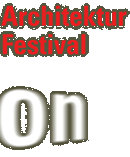

 |
| Lightweight Construction – Museum in Sabres, Frankreich |

 |
 |
|
 |
|
Pendl | Stelzhammer Achleitner | Preiss Zorn | Hinterreitner Casanova-Fanzoi | Lichtblau Wurz | Traupmann Remmers | Henke Piet Eckert Janz | Haferl Bernd Schiller Mathias Beuster Jürgen Neuwald Programm |
After a short overview of some of the office’s works, the lecture will concentrate on the Ecomuseum in Sabres developed as contemporary architecture which references the local context. Despite an immense surface area and a daring architectural form, it becomes integrated without colliding with its environment, in conjunction with the volumes of the nearby detached houses and the boarding facades of traditional sheds. According to different angles of view, it can be read as a unique building with supple and broad forms, or several buildings whose masses echo the railway station and the town of Sabres. This edifice was built using local resources (maritime pine tree) for its structure and envelope. Its architectural expression comes mainly from the legibility and rationality of its structure. Moreover, the structural principle, which is composed of wooden frameworks and boards (mainly oriented strand boards), allows a very low cost of realization in spite of volumes of 5 to 6 meters high and the requirements of the Directorate of the Museums of France concerning security and humidity (half of the building is air conditioned). A vast system of shutters envelops the volumes of the pavilion, made of thermally treated pinewood blades in front of both wall and glass parts. The building is intended for several uses: storage and logistics for the ecomuseum, rooms for temporary or permanent exhibits, room for conferences, and pedagogic space. Throughout the history of the territory of Les Landes, the physical, economical and sociological upheavals have shaped its landscape. The underlying theme of the Ecomuseum and more specifically for the Pavilion is sustainable development. The permanent exhibit retraces the history of the territory of Les Landes. The big room for temporary exhibits offers a high volume, zenithal lighting and openness toward the landscape, to emphasize the intention of the Pavilion which is about ecology and territorial development. B.M. Bruno Mader, born 1956 in La Rochelle, France. Since graduating in 1983 from the Paris Belleville School of Architecture, he has deepened a dialogue between architecture and the environment, between eras and styles. He tries to anchor buildings in the local identity, focusing on heritage, construction techniques and traditional materials in contemporary design. Based in Paris. Realized projects (selection): Highway rest points in Somme (A16, 1998), Lot (A20, 2002) and Corrèze, France (A89, 2003), Museum of the Landes de Gascogne in Sabres, France (2008), Tennis Complex in Paris (2010). Current projects (selection): Museum of the War of 1870 in Gravelotte, France (2012), orientation building in Mont-Saint-Michel, France (2012). Awards (selection): Winner for the construction of the headquarters of the Auvergne Region Council in Clermont-Ferrand, France (2012). Weiterführende Links: www.baugenial.at www.brunomader.fr |
|||
|
||||